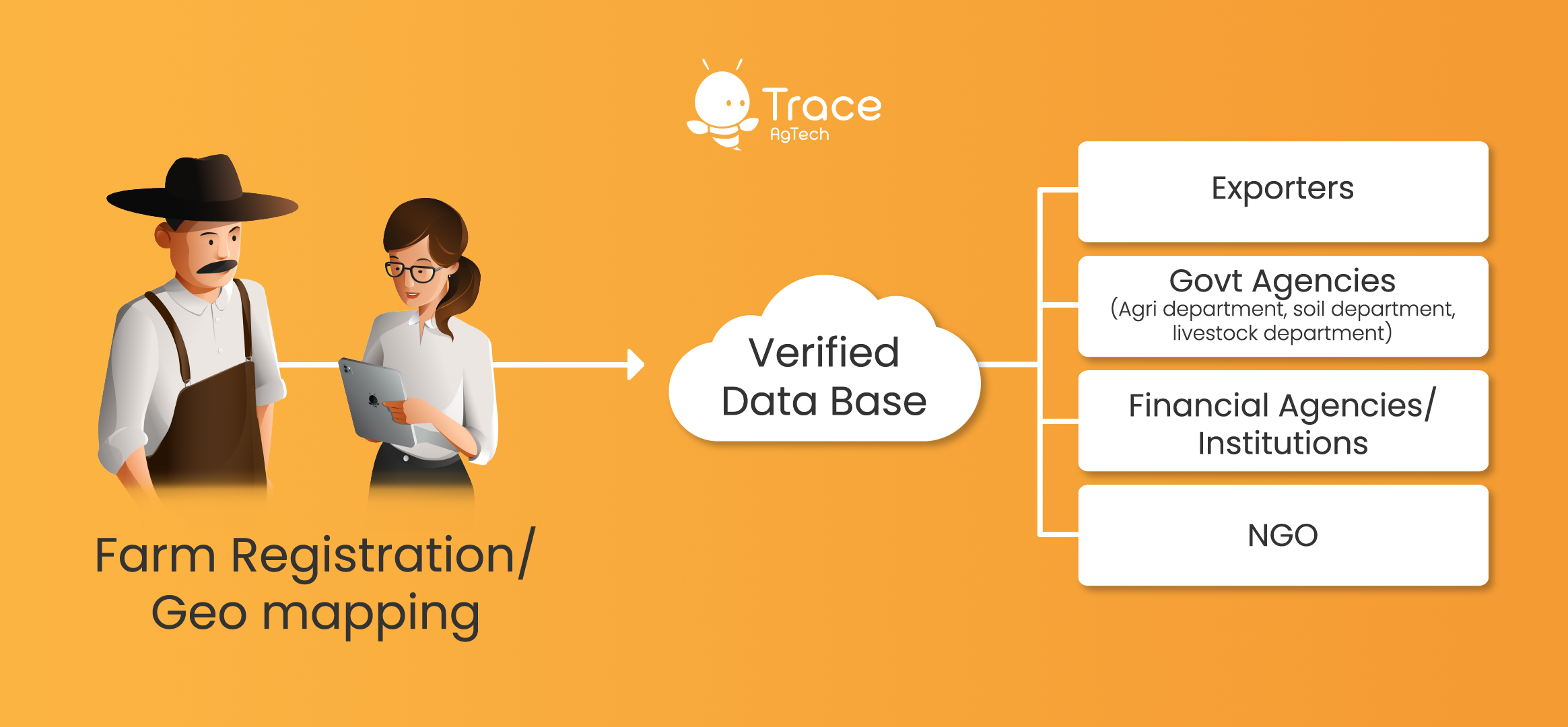A farmer registration system is all about profiling the farmer directly from the field as well as collecting data regarding the farmers’ land area, crop and farming practices. What are the purposes of this system? Keep reading to learn more about its benefits and how it works or get a Free Demo Today.
In the sweltering heat or freezing cold, farmers work tirelessly to keep our fridges stocked with food. The farmers, however, do more than just provide food – they also contribute to the supply of cotton clothes in your closet.
To fully exploit the potential of the supply side, it is imperative that one has a comprehensive registration database covering all the regional producers.
Food security also entails a reliable supply chain, which is a significant contributor. You can only accomplish this if you have an ecosystem that encompasses both those who supply and those who demand jointly.
Moreover, a farmer registration system paves the way for governments to take action towards securing the food supply by documenting information about the farms that grow the crops and ensuring that the benefits go to the eligible farmers.

Get a free demo today to learn more!
Farmer Registration System: What does it entail?
Farmer registration involves more than just having a name and an address of a farmer, it is imperative to be aware of the land they hold or the kinds of crops they produce. As a result, it facilitates strategic and targeted initiatives prior to harvest.
There are many inadequacies in the food security system that makes it extremely difficult for emerging economies to provide food security and traceability. Among them are the capabilities to work with farmers to source products, and coordinate supply chains, as well as others.
Farmer Registration System: What is the nature of this registration system?
An example of a technology-enabled program is a producer registry, which assists a wide variety of agencies in their area of operations (for example, in the area of agriculture) in building a database of farmers and producers in that region.
Farmers are asked about the crops they grow, area under each crop and the area under each crop is mapped using satellite imagery which auto estimates the crop area for validation. This provides a realistic forecast of their products for the season or the year ahead. There are a lot of applications that allow this database to communicate and interact with public data sources, such as land-related records, weather predictions, etc. The Agri-intelligence database provides valuable assistance to the agricultural industry and government by providing an estimate of the requirement that all the participants in the value chain be validated by government agencies, as well as the establishment of a comprehensive database of individuals who are eligible for the various welfare programs run by the government.
For seamless integration, the following modules are available.
#1 – Digitalization Module
In this module, sharecroppers and farmers register their demographic information, land ownership, geo-mapping each of their crop areas and banking information. Each producer in the state is assigned a unique identification number pursuant to this module.
#2 – Land Verification Module
Land records are entered into this module and automatically compared with an existing digitized land records database. In case the same cannot be done, there is a manual verification option offered.
Additionally, this validated data can be integrated with multiple other applications, such as procurement systems as well as supply chain applications.
#3 – Bank Verification Module
A module for bank records verification ensures that the bank activity records that farmers enter, go through an automated check with the banks.
Depending on where you are, their identification numbers allow links to be made. For example, the Aadhaar number in India is required to verify bank accounts.
#4 – Planning and Forecasting Module
Data such as that above is provided to procurement departments, government agencies, and food processors in the form of customized management information systems (MIS) designed to aid in forecasting and planning farm production for all parties concerned.
Summary
Accurately documenting a farmer profile and his crop is critical to any agency – (Governmental/non governmental) involved in helping farmers improve their productivity and livelihood. This is also important for funding agencies to have a verified database of farmer beneficiaries so that they can be confident that their support reaches their eligible farmers.


Any comments?